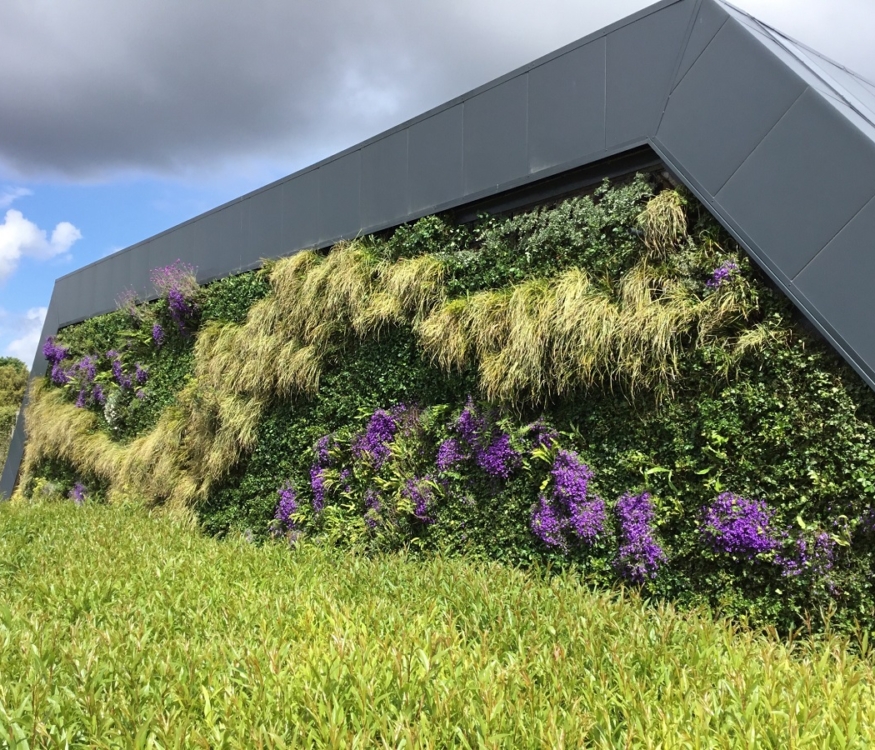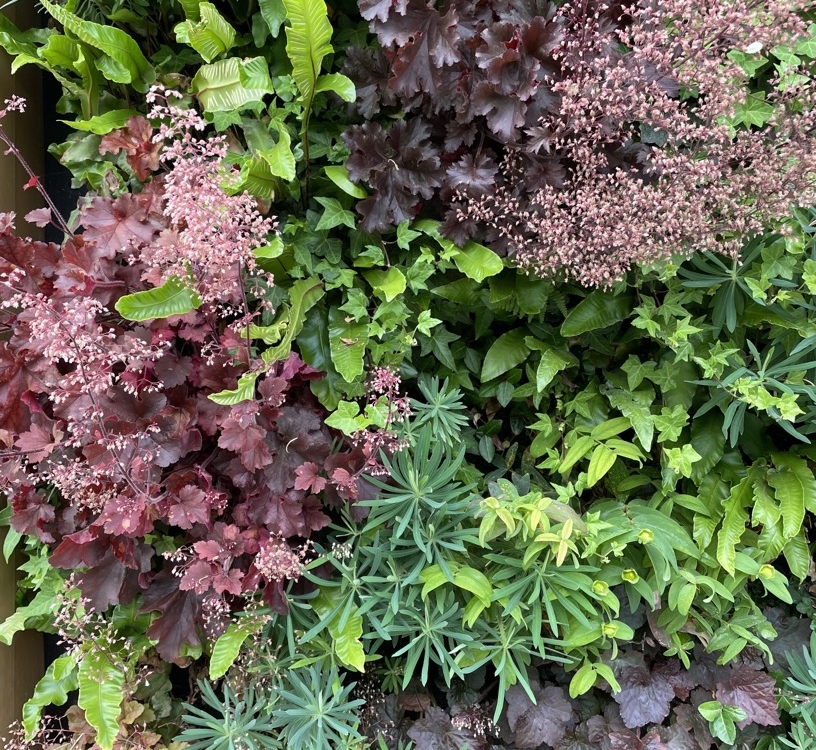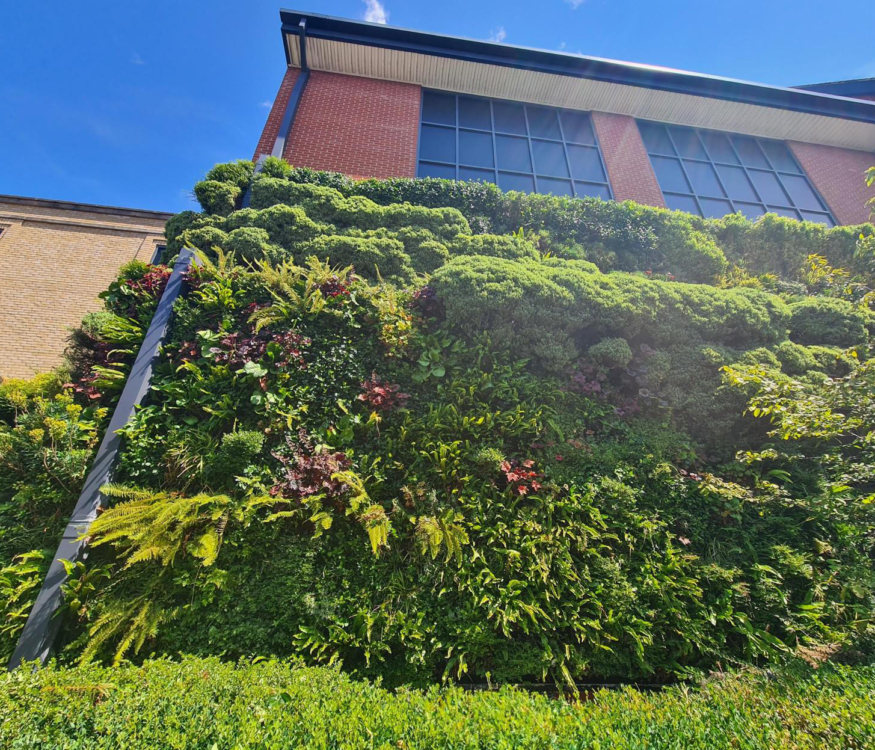Biotecture’s living walls provide year-round greenery, but they truly come alive in summer when the seasonal planting blooms. The campanula at the McArthurGlen Ashford Designer Outlet is particularly stunning. However, these flowering plants are not just there for their visual appeal; they play a vital role in boosting local biodiversity.
The survival of our ecosystems relies heavily on pollination. Approximately 75% of the world’s food crops depend on pollinators, but unfortunately, these crucial species are under threat. Globally, nearly 35% of invertebrate pollinators, including bees and butterflies, and about 17% of vertebrate pollinators, such as bats, face the risk of extinction. Intensive farming practices, land-use changes, mono-cropping, pesticides, and the effects of climate change, including higher temperatures, all contribute to the challenges faced by bee populations.
So, how can living walls help address these issues?
Provide additional surface area for plants
The amount of plants in an area is an important determinant of biodiversity. In urban areas where space is limited, living walls offer a solution by allowing dense planting without sacrificing valuable horizontal space.
Instant habitats
Unlike other forms of vertical greening, such as climbers that take years to mature, Biotecture’s living walls are pre-grown in their nursery, ensuring mature and thriving planting from day one. This provides instant habitats for pollinators and other wildlife.

Plant variety
The greater the variety of plants and native species in a green space, the higher the biodiversity. By carefully selecting plant species that bloom at different times of the year, living walls can ensure a consistent source of nutrition for pollinating insects. Flowering plants serve as a valuable food source, supporting the pollinator populations throughout the seasons.
Integrated habitat boxes
Living walls and hoardings can incorporate habitat boxes, offering safe spaces for insects to hibernate and reproduce. These features replicate the natural environments that many beneficial insects, such as lacewings, ladybirds, and solitary bees, seek out.
All major developments in England now need to deliver a mandatory 10% Biodiversity Net Gain which needs to maintained for at least 30 years.
If you are considering a living wall on your next project, get in touch!





